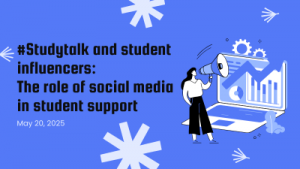NG Chi Wui
Gifted education has been introduced to the Hong Kong education system since the publication of the Education Commission Report No. 4 in 1990 with the aim of “[ensuring] that the educational needs of all students are met so that their potential … can be maximally developed” (Education Bureau, 2008, p.1). Local schools are currently recommended to plan and implement gifted education using a whole-school approach by adopting the “Three-Tier Implementation Model”. These three tiers refer to use of pedagogical approaches unleashing all students’ potential in regular classrooms; organization of pull-out programmes for more capable students within the school setting; and provision of enrichment learning opportunities for exceptionally gifted students outside the school setting (Education Bureau, 2008). Despite the delineation of gifted education in official curriculum documents and the promulgation of gifted education, as a current school manager of a primary school and a former secondary school teacher in Hong Kong, I observe that many local educators still possess misconceptions about gifted education, and these misunderstandings need clarification.
The overarching misunderstanding is about the definition of giftedness. Renzulli (1978) defined giftedness as a combination of above-average ability, task commitment, and creativity in either general or specific performance areas whilst Sternberg (1997) held a triarchic view of giftedness by proposing three types of giftedness: analytic giftedness (i.e. intelligence), synthetic giftedness (i.e. insight, intuition, creativity), and practical giftedness (i.e. problem solving). The Hong Kong government highlights Marland’s (1971) characterization of giftedness as possession of exceptional achievement or potential in one or more of the following areas: (i) measured intelligence; (ii) aptitude in a specific academic discipline; (iii) creative thinking; (iv) talent in visual and performing arts; (v) leadership; and (vi) psychomotor ability. For all the aforementioned conceptualizations of giftedness, it is observed that some primary and secondary teachers in Hong Kong possess a tendency to label students as “gifted students” or even recruit students into the school-based talent pool merely on the basis of their academic results in examinations and outstanding results in interschool competitions. Such practices keep students with certain exceptional abilities or intelligences, such as creative thinking, leadership skills, and intrapersonal intelligence, out of consideration. Given the multifaceted definitions of giftedness in the literature, schools are highly advised to place less emphasis on the results of conventional paper-and-pen tests and focus more on other aspects of students’ development.
Teachers also appear to hold disparate views of the actual implementation of gifted education at school. One prevalent avenue for catering for the needs of gifted students is differentiated instruction, which provides guidance for teachers in addressing student differences in readiness, interest, and learning profile, with the goal of maximizing the capacities of individual learners (Tomlinson, 2017). However, in consideration of factors such as human resource management and overall benefits brought to the school, some senior leaders appear to distort the essence of differentiated instruction by advocating programmes benefiting the largest number of students and remaining sustainable in the long run instead of those targeting the needs of the minority. Valid as the tenet of “No Child Left Behind” is, the aim of differentiation is to cater for personalized needs of individuals. It is thereby necessary for teachers to renew their mindsets and avoid outsourcing all pull-out programmes when planning gifted education for students. Arrangements can be made for teachers to lead distinct gifted education programmes at school on the basis of their interest, capacity, and experience.
As an alumnus and school manager, I would like to argue that collaboration with various stakeholders, such as alumni, is efficacious in providing diversified learning experiences for students, and in nurturing all individuals without exerting any financial burden on the school or any extra burden on teachers’ workload. Please feel free to watch a video (in Chinese), which is my sharing of my personal experience of proactively engaging in the implementation of gifted education in a local primary school in collaboration with the Gifted Education Coordinator of the school.
Above all, it is vital that a Gifted Education Coordinator, who is familiar with the concept of gifted education and enthusiastic about its implementation, evaluate students’ needs and coordinate gifted education programmes in the school (Education Bureau, 2008). Unfortunately, by no means is such a role widespread in Hong Kong schools, and the teacher taking up this position may not be a middle leader, who possesses the power and authority to deploy human and financial resources. It is hoped that gifted education in Hong Kong can be developed in a positive direction in the long run in order to unleash all students’ latent potential.
References
Education Bureau. (2008). Development of gifted education in Hong Kong. https://www.edb.gov.hk/attachment/tc/curriculum-development/major-level-of-edu/gifted/resources_and_support/ge_resource_bank/files/Policy/policy/policy_Eng_Mar08.pdf
Education Commission (1990, November). Education Commission Report No. 4. Hong Kong: Hong Kong Government Printer.
Marland, S. P. (1971). Education of the gifted and talented – Volume 1: Report to the Congress of the United States by the U. S. Commissioner of Education. https://files.eric.ed.gov/fulltext/ED056243.pdf
Renzulli, J. S. (1978). What makes giftedness? Reexamining a definition. Phi Delta Kappan, 60 (3), 180-184. https://eric.ed.gov/?id=EJ190430
Sternberg, R. J. (1997). The concept of intelligence and its role in lifelong learning and success. American Psychologist, 52 (10), 1030-1037. https://eric.ed.gov/?id=EJ190430
Tomlinson, C. A. (2017). Differentiated instruction. In C. M. Callahan & H. L. Hertberg-Davis (Eds.), Fundamentals of gifted education (pp. 279-292). New York, NY: Routledge.



